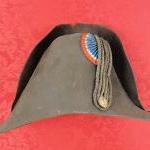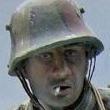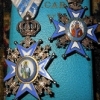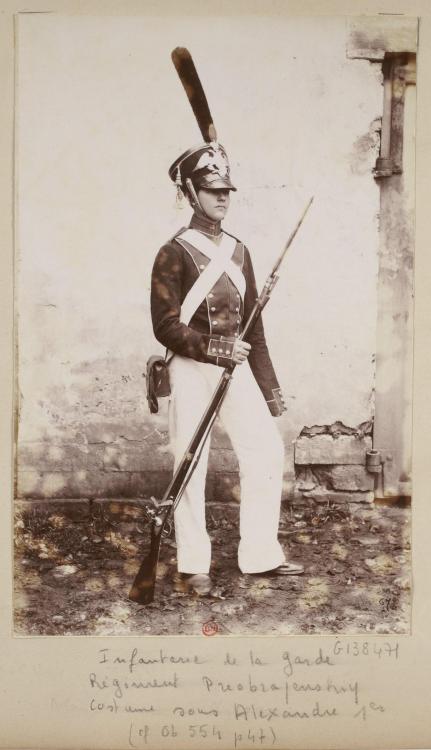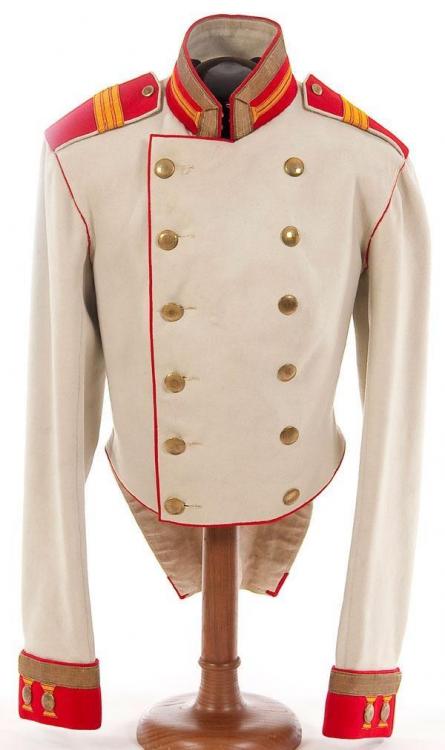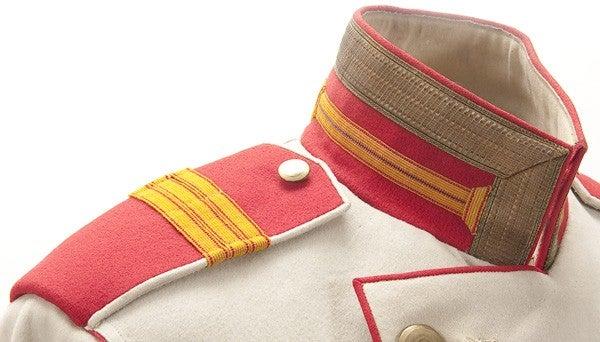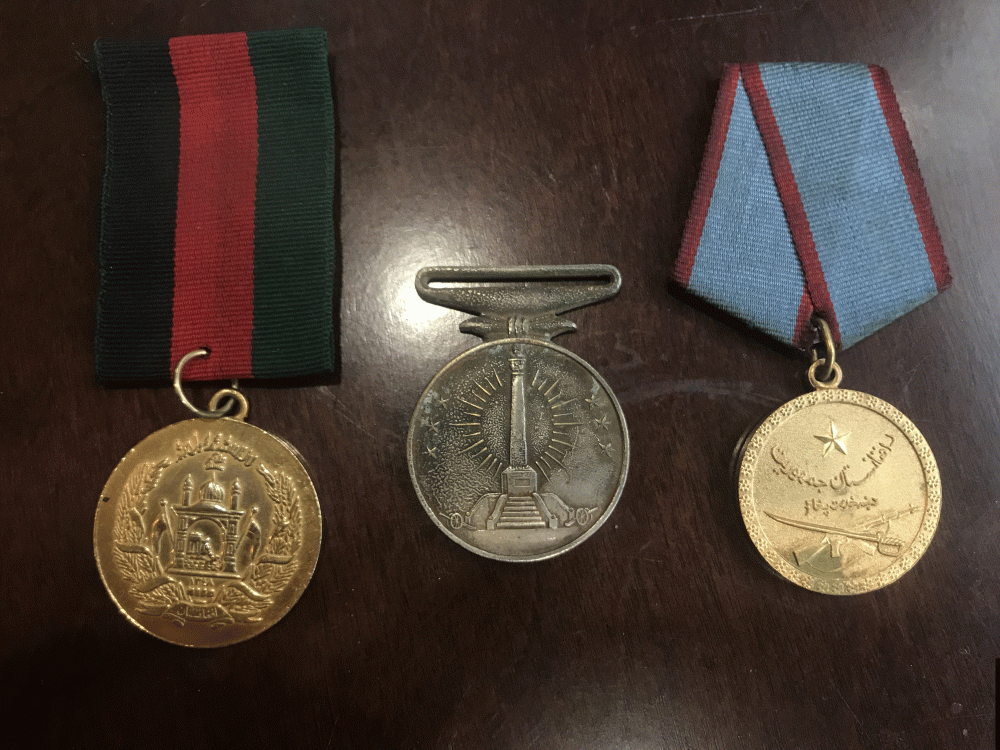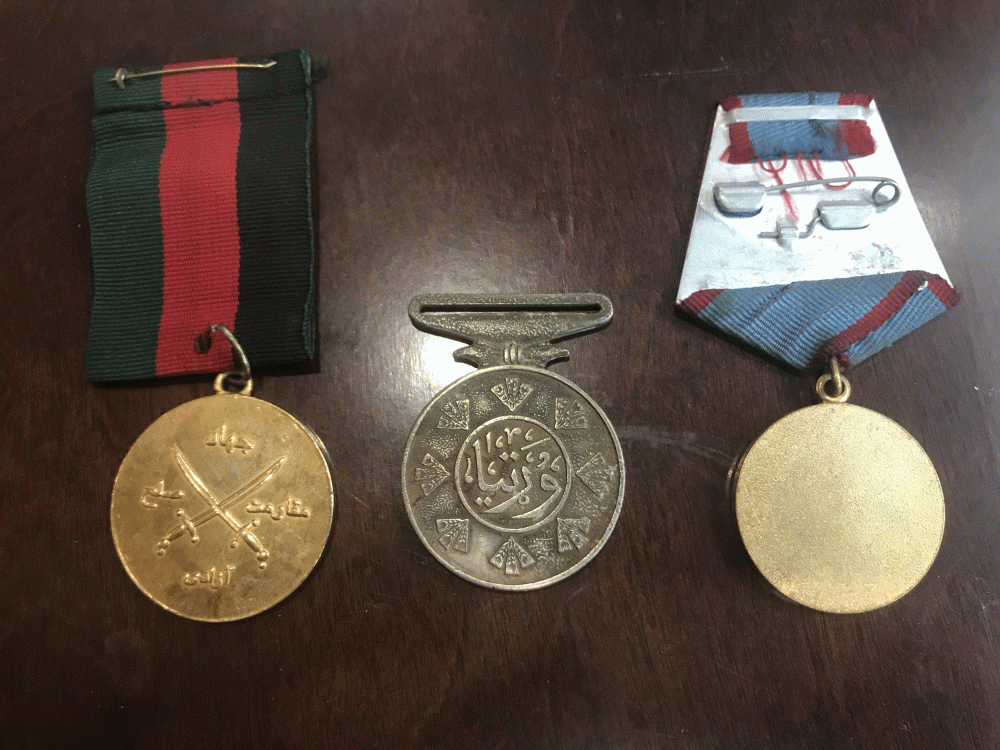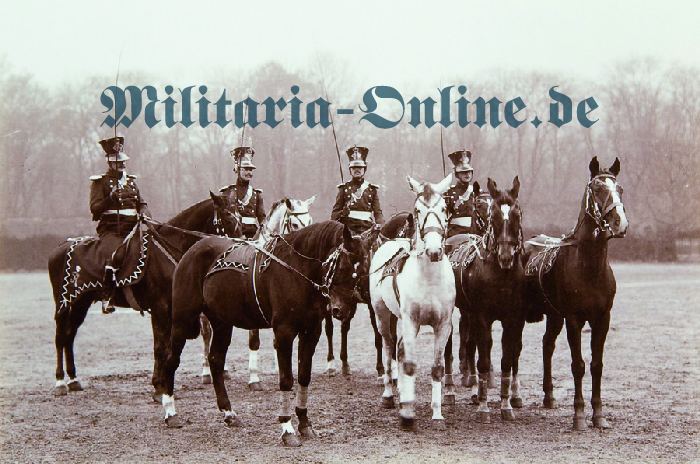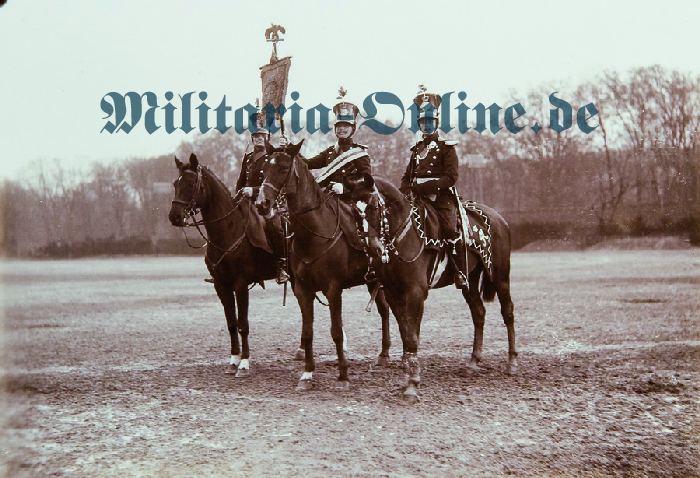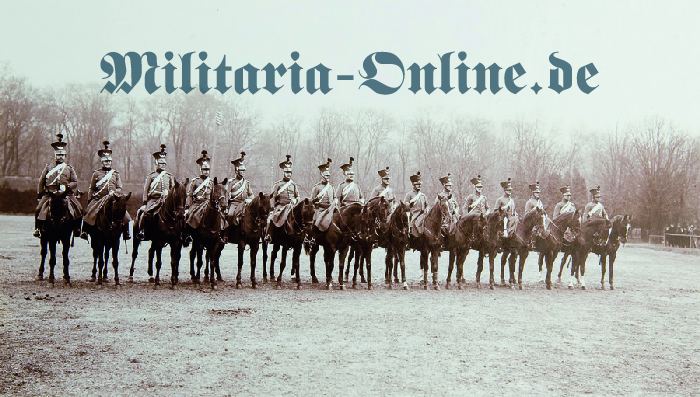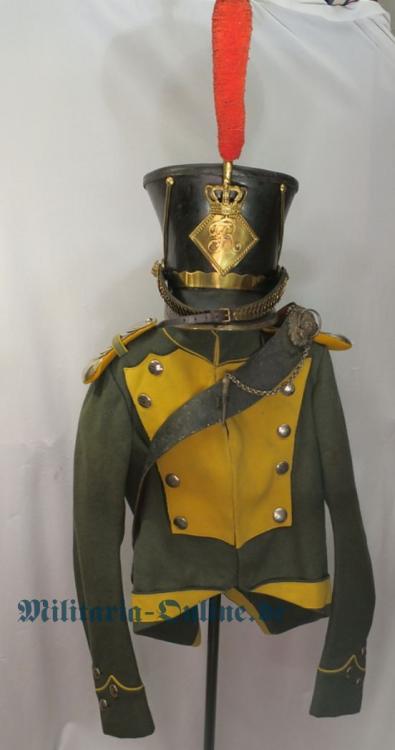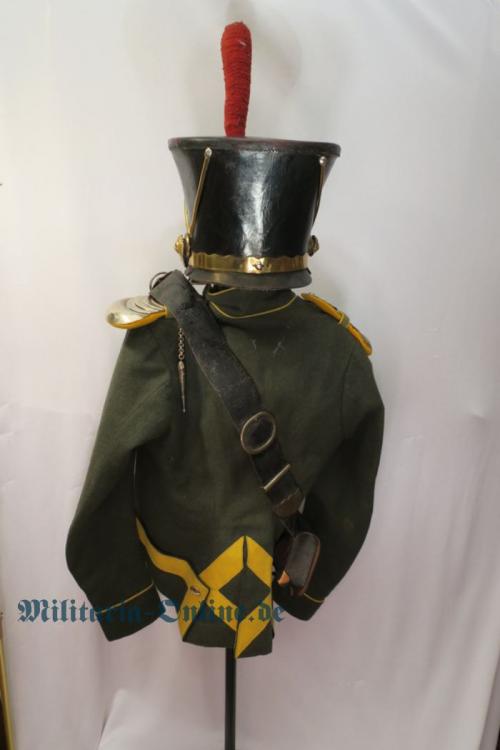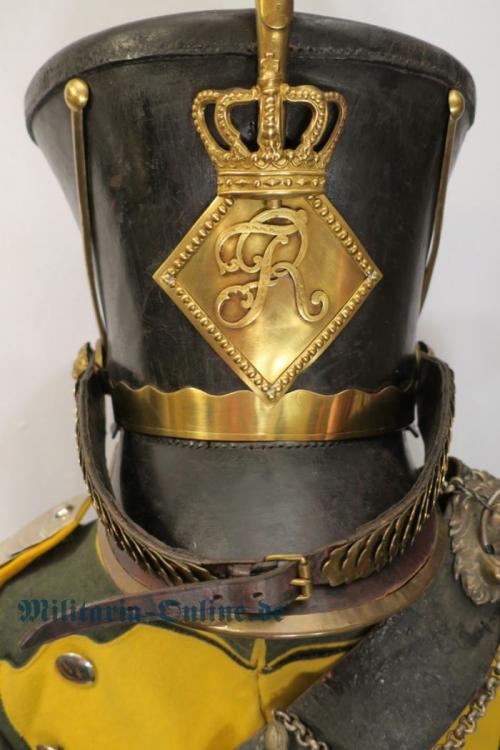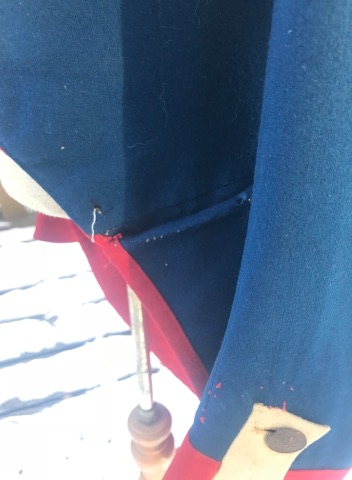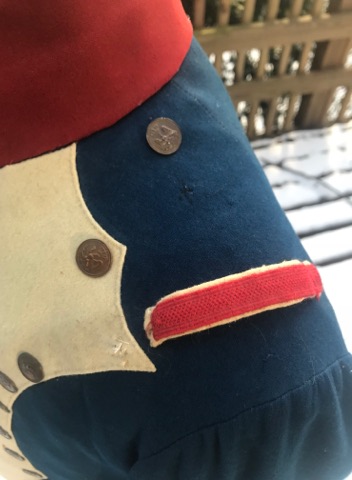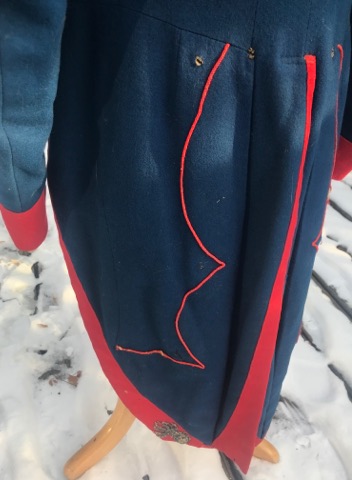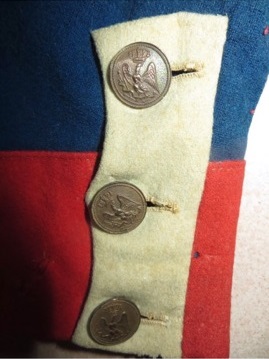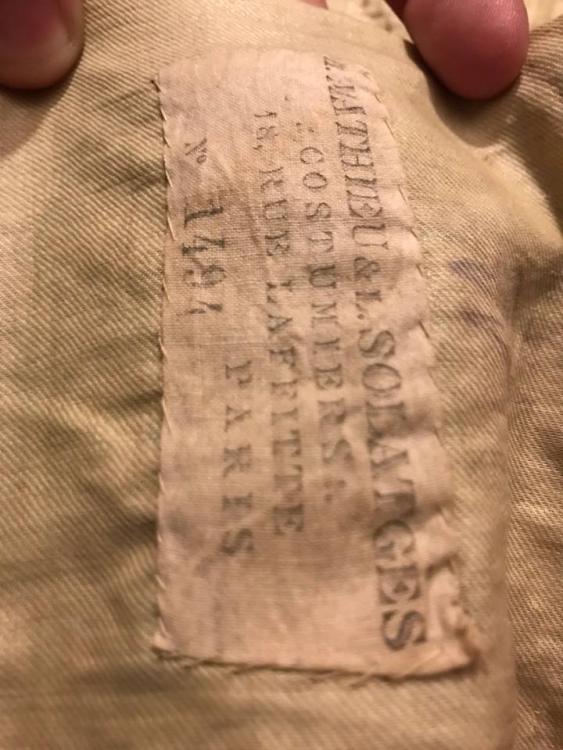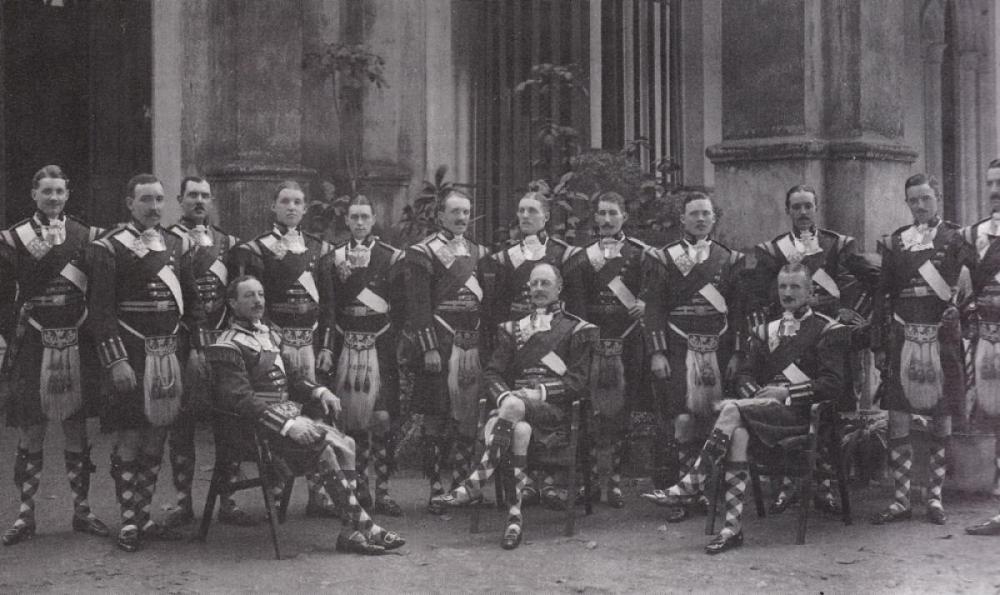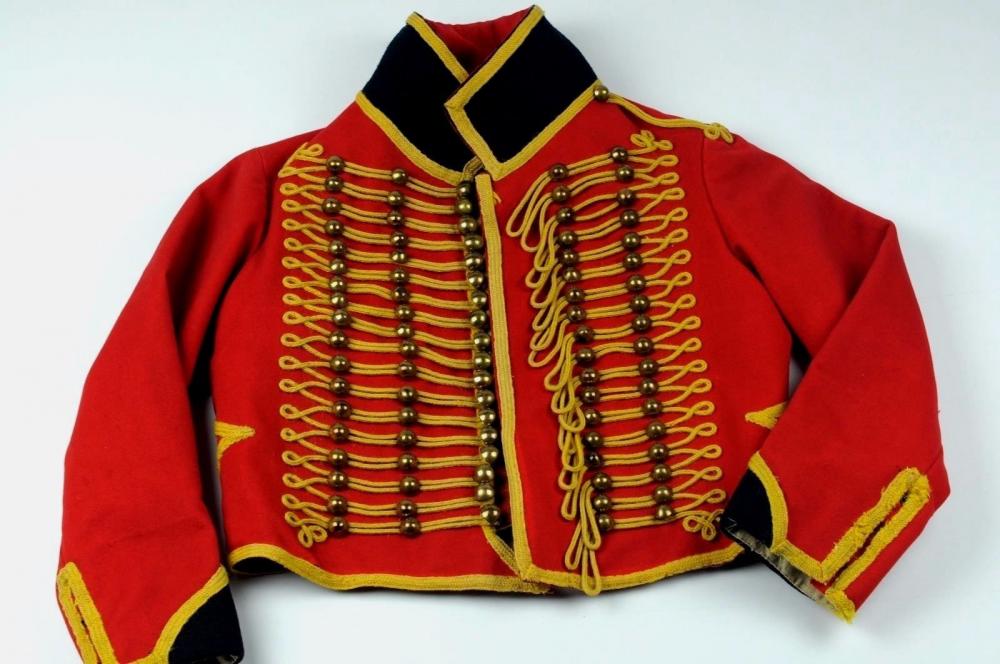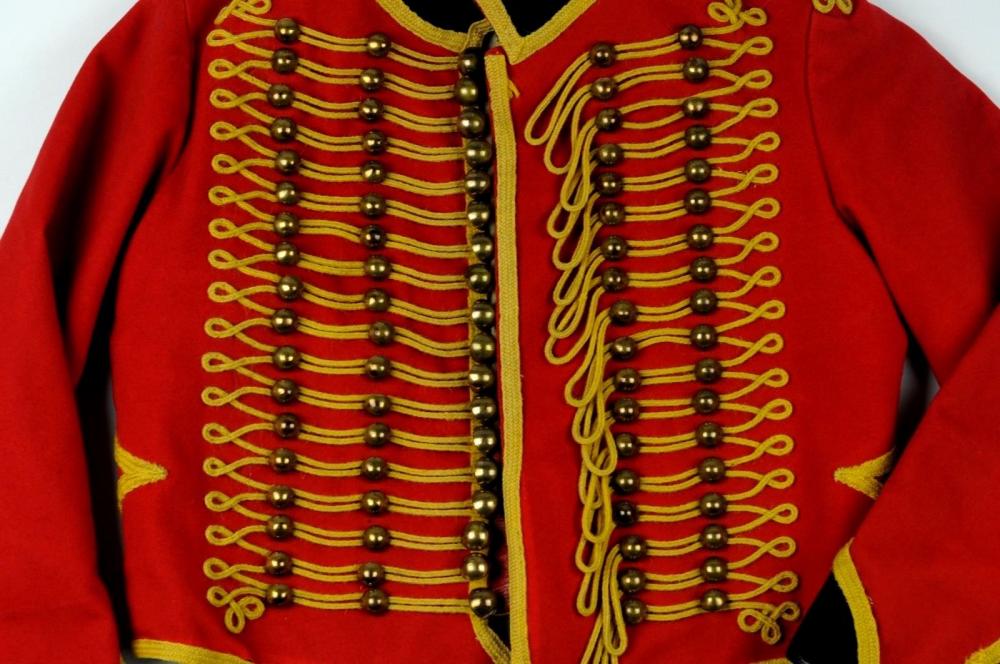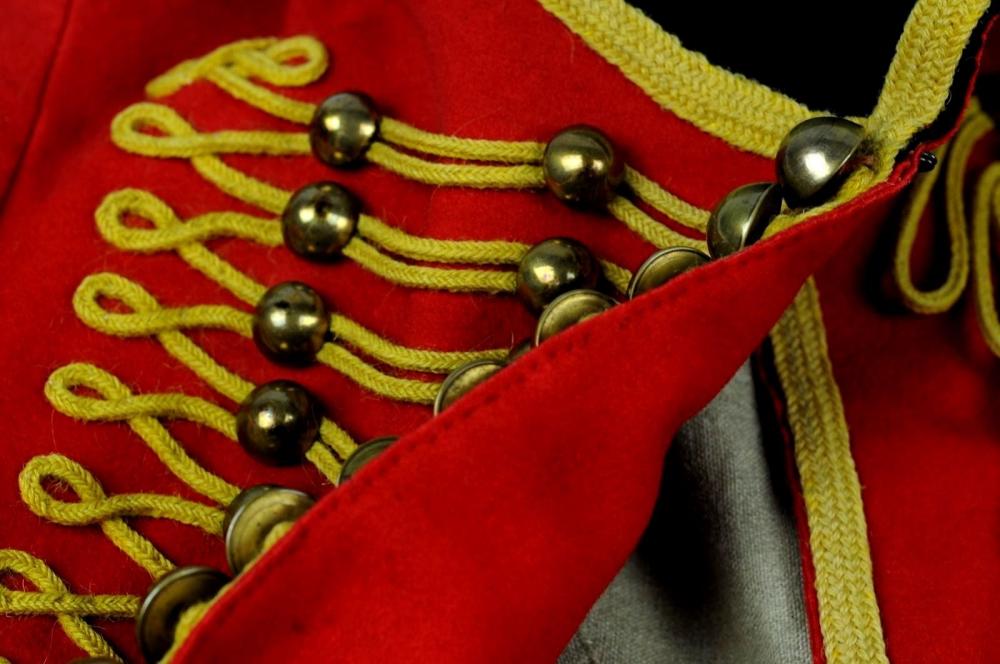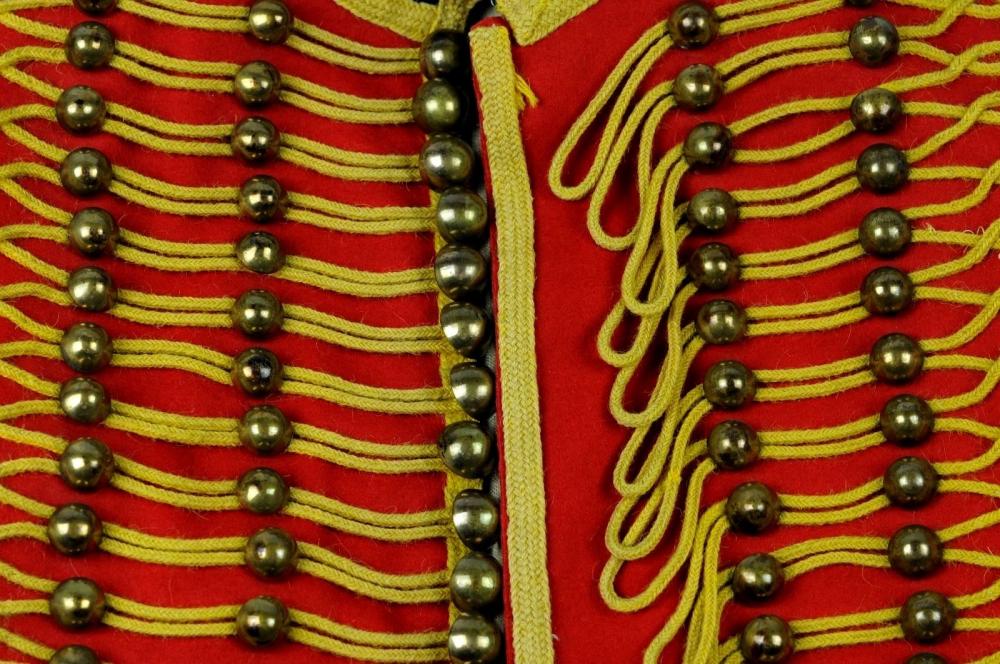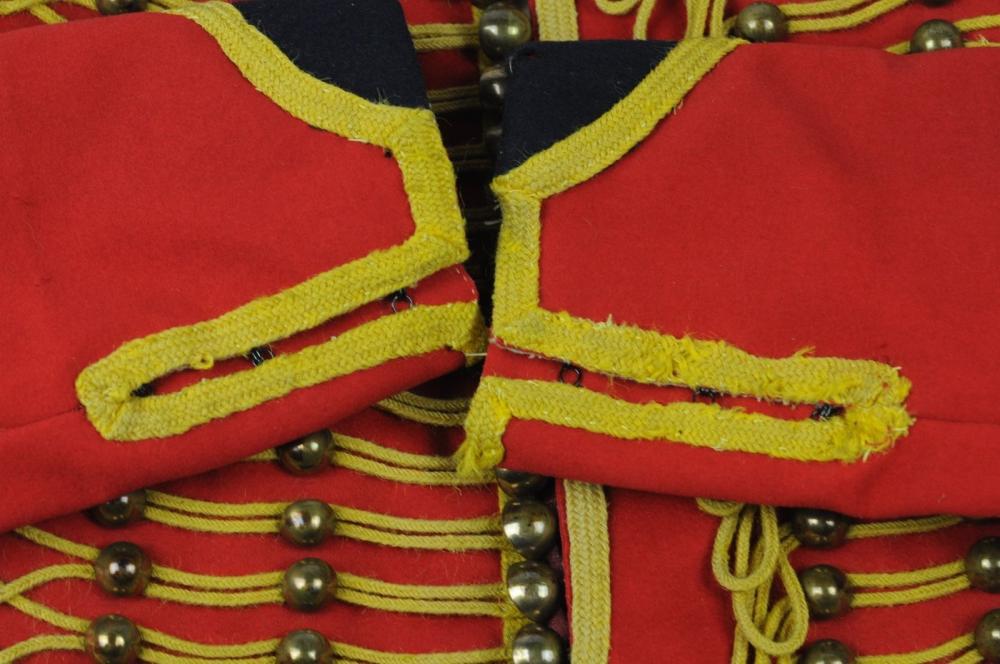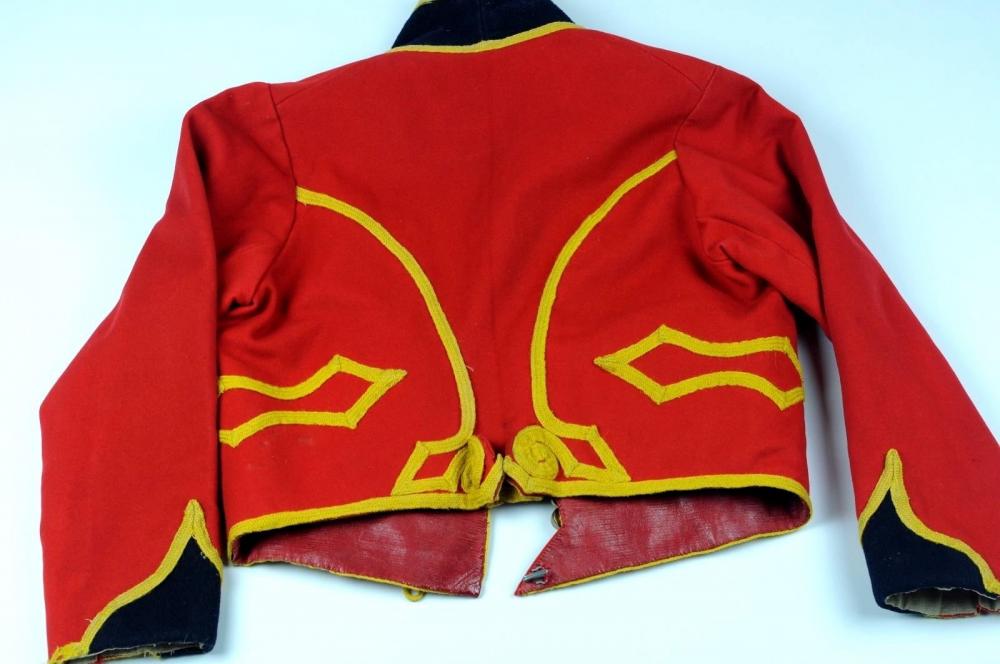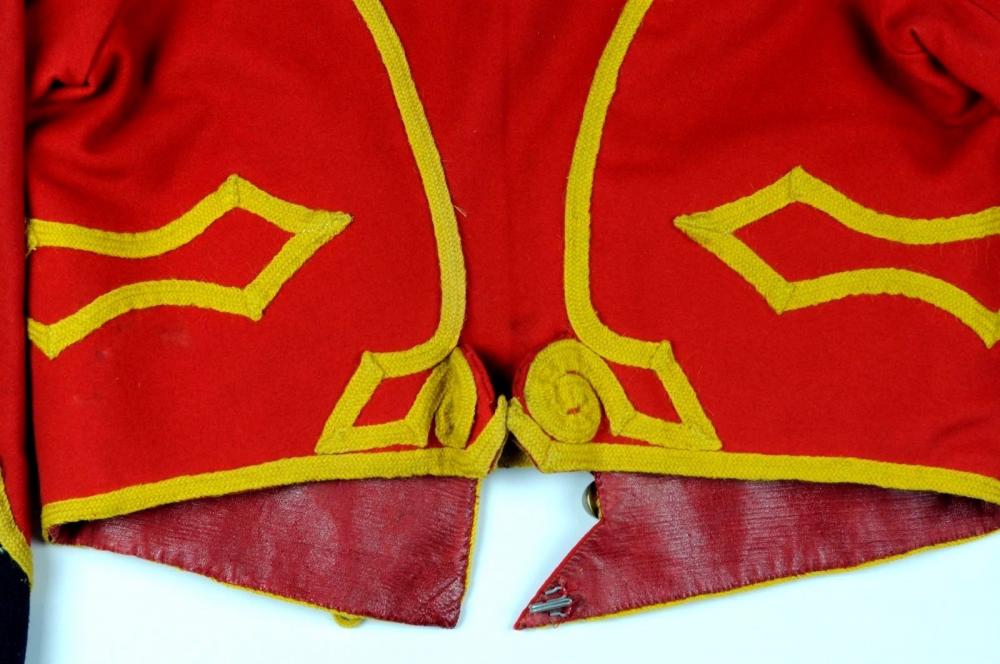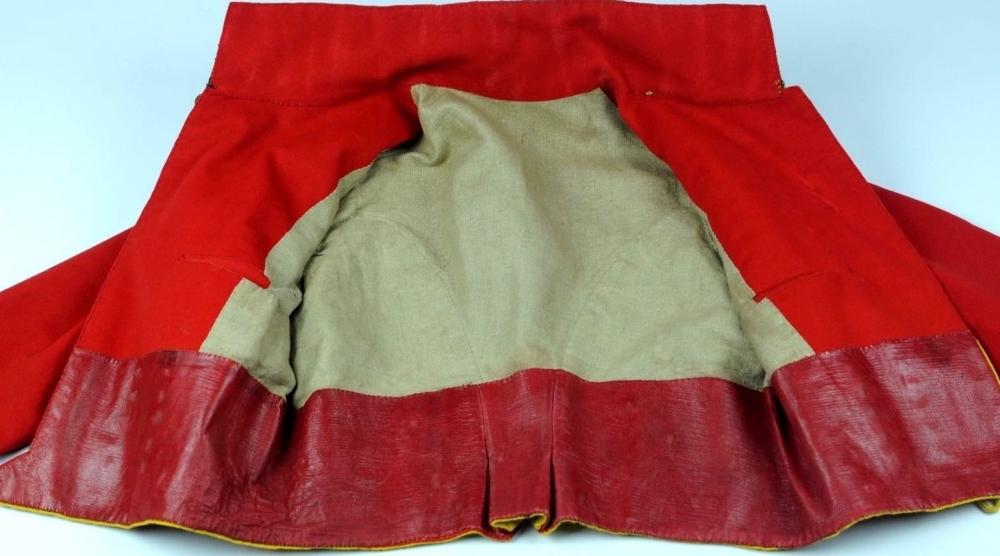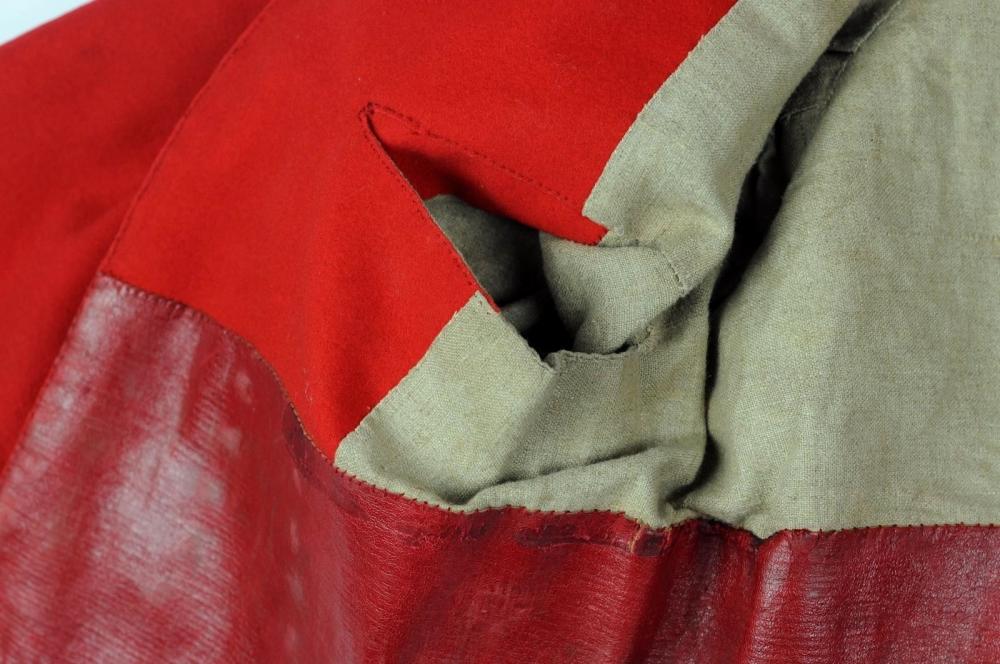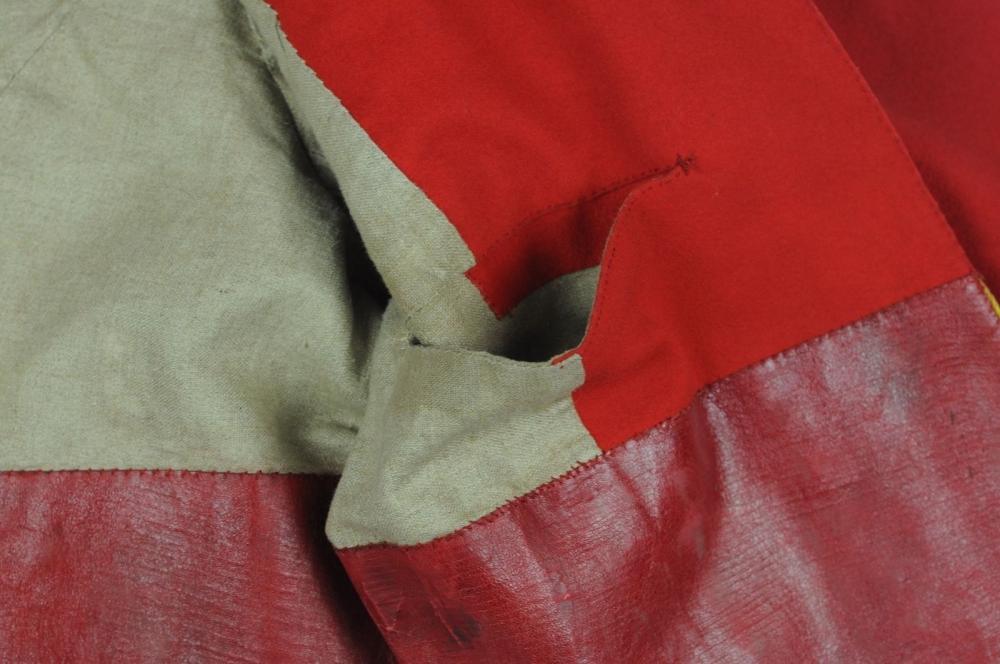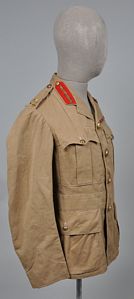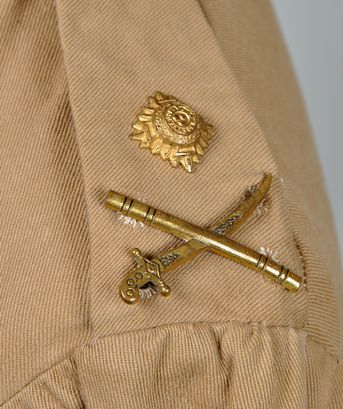-
Posts
268 -
Joined
-
Last visited
-
Days Won
1
TS Allen's Achievements
-
Apparently Waterloo was recreated at the Aldershot tattoo several times. Here's a video of the 1929 tattoo that shows French forces, including Napoleon: Another image of a 1920s or 1930s recreation of Waterloo at Aldershot: (Source: https://www.shutterstock.com/editorial/image-editorial/reinactment-battle-waterloo-aldershot-tattoo-2437764a) Alamy also has images of the tattoos showing... French artillery - https://www.alamy.com/stock-photo-army-british-1930s-aldershot-searchlight-tattoo-rehearsal-a-full-dress-82297646.html?imageid=2BAE317A-876D-4C72-8E65-3D6510A6E15D&p=62486&pn=1&searchId=0099b0733daea9332c0a0222f2b4a30b&searchtype=0 British line infantry - https://www.alamy.com/stock-photo-aldershot-serrchlight-tattoo-rehearsal-dress-rehearsals-of-the-searchlight-80377971.html British cavalry - https://www.alamy.com/aldershot-tattoo-1935-the-finale-image366493753.html?imageid=C26B985F-36C1-4091-8368-62075446F3A6&p=181734&pn=1&searchId=0099b0733daea9332c0a0222f2b4a30b&searchtype=0
-
I own a helmet with this exact plate on it! I think your attribution is right, and this was worn by an Afghan horse artillery unit in Kabul. There are two helmets in Carlisle Castle which have very similar front-plates, surmounted by lion-heads, which were captured from the Amir's bodyguard in Kabul in 1878. IMG_8576.HEIC
-
Here is an interesting photo. It is from an album containing a hundred photos of the Russian Army, compiled in France in 1892. It clearly shows a soldier in a uniform from the 1812 period. The album is described in more detail at: http://riowang.blogspot.com/2012/06/russian-army.html Another Russian "1812" style uniform, identified as a turn-of-the-century copy, sold at auction in 2010. The original listing is at: https://www.liveauctioneers.com/item/8015734_84-imperial-russian-horse-guard-uniform Here is another great photo showing early copies of Napoleonic uniforms, this time "heritage" uniforms worn by members of a German cuirassier regiment. The uniform second from left is likely from the era of Frederick the Great, and the uniform on the far right is almost certainly the uniform of the regiment at the time the photo was taken, probably between 1890 and 1914. I originally found it at: http://www.kuerassierregimenter.de/ausruestung.php?set=&id=1
-
Noor, This uniform likely has the 1914-1915 Star ribbons but not the other standard Great War ribbons because the ribbons were put on between December 1918 when that medal was awarded and July 1919 when the British War Medal was awarded. The Victory Medal was not awarded until September 1919. Best, T.S.
-
Hi @eurorders, I believe that these epaulets are British, not American. The small laurel wreath on the eagle indicates the eagle is the regimental badge of the Royal North British Dragoons, also known as the Scots Greys. These epaulets likely date from 1832-1855 or so and would have been worn by officers in full dress. During this period, the Scots Greys fought in the Crimean War. The eagle badge commemorates the capture of a French regimental eagle by the Scots Greys at Waterloo some years before. The real experts on these would be the Royal Scots Dragoon Guards Museum, who maintain the regimental traditions of the Scots Greys. I encourage you to reach out to them to confirm the identity of the epaulets. They likely maintain a similar set in their collections (or wish they did!). Their website is at: https://www.scotsdgmuseum.com/ British epaulets from this period are very similar to American epaulets, and I suspect many American officers wore imported epaulets. I have examples of both American and British epaulets from the period in my collection and the construction is almost identical. The eagles on these epaulets are probably not an American colonel's rank insignia, because of the small laurel wreath which is characteristic of the Scots Greys' regimental badge. Hope this helps! T.S.
-
Thanks so much, Alexander. I sincerely appreciate the identification.
-
Hello all, Can anyone assist me with identify the three medals in the images enclosed? I acquired them all in Afghan bazaars for very modest sums. The one on the left with the tricolor ribbon was identified as a mujahideen medal associated with Ahmed Shah Massoud by the seller--who may or may not have been well-informed and honest. Thanks, T.S.A. Here are the backs
-
Here's another fascinating set! Sadly I don't think I will be able to add it to my collection but want to add it to this thread for reference. It was worn by the cavalry of Württemberg for the 1906 centenary celebrations. It is marked just like any other German military uniform from that period. Some photos of these in wear are included. According to the dealer, it includes original parts. I think the shako plate is original. I have seen an identical shako for sale in the US, but without the plate. Photos remain (c) Militaria-Online. The uniform is currently on offer at: http://www.militaria-online.de/artikelnr_3230
-
A new acquisition! For the retour des cendres (that is, the return of Napoleon's ashes from exile on St. Helena to Paris) in 1840, many veterans dressed up in old and reproduction Napoleonic uniforms to welcome Napoleon back. Thereafter veterans continued to dress up, particularly for the annual commemoration of Napoleon's death on May 5th. There is a very well-known series of photos of Napoleonic veterans dressed in what are likely reproduction uniforms in the Anne S.K. Brown military collection at Brown University which can be seen at: https://library.brown.edu/collections/askb/veterans.php. Careful observers will note that although the uniforms look Napoleonic in these ca. 1858 photos, many aspects of the uniforms such as the epaulets being worn are clearly post-1815. This coatee was an actual military coatee that dates from the July Monarchy (1830-1848), and was modified at some point to look like it dates from the First Empire. The coatee itself is made of fine light blue wool and features heavily chest padded, seamed waist (common from the 1820s onward to achieve a slim-waisted silhouette), and pockets in the tails. At some point the front of the coat was carefully cut to make it look like a First Empire coatee, and new turnbacks, cuffs, and collar were added. There is evidence that galon de grade (which look like US service stripes) were removed to make room for the new cuffs. The remaining buttons are all the smaller-sized buttons worn by the Imperial Guard and appear to be 19th century copies. All of the larger buttons from the front waist and tails were removed (perhaps those were original). Two of the four silver bullion grenades remain on the tails. Inside the tunic, there is an old costume-house label, reading from H. Mathieu and L. Solatges, Costumiers at 18, Rue Laffitte, Paris. This costume was No. 1494. I doubt this uniform was originally made for them given its construction. Then again, Mathieu and Solatges have long been the costumers for the Opéra-Comique in Paris, and one can imagine this tunic has been worn in La fille du régiment as far back as its first performance in 1840, when it premiered with a cast in First Empire coatees. Although this tunic does not perfectly copy a First Empire Imperial Guard coatee as it should have a blue collar, it is a lovely approximation and a piece of history in its own right, especially given that it may well have been worn by a veteran of Napoleon's Grande Armée. I was so pleased to acquire it for my collection. I also learned recently that the French army still wears coatees--at least, the "Grenadiers de l'Empreur" of the Republican Guard do! Like the Commander-in-Chief's Guard at the 3rd U.S. Infantry Regiment in Washington, D.C., they are serving soldiers who recreate the past.
-
The Armoury of St. James, a London-based militaria shop, currently has a lovely gorget listed... from 1912! I'll quote their description: "In 1911, 2nd Battalion, the Royal Highlanders performed a prominent role in George V’s imperial coronation durbar at Delhi, and the same year were presented with new Colours by the King. On the latter occasion the King made special reference to the battalion’s extraordinary valour in 1815 at Waterloo, where 2/42nd Royal Highlanders repulsed eleven French cavalry charges, losing 289 of its 498 officers and men. In September 1912, to mark the occasion of the King becoming Colonel-in-Chief of the regiment, the officers and sergeants of the 2nd Battalion held a special dinner at Fort William, Calcutta. For both the dinner and subsequent officers’ ball in December of the same year, the Black Watch officers wore an elaborate and specially made uniform based on the style of 1815, of which the present gorget was an integral part." The gorget is at http://www.armoury.co.uk/antiques?show=All Enclosed a photo of the officers in uniform at the 1912 dinner.
-
I think I may have found another piece that fits the theme of this thread. It conforms almost perfectly to the pattern of a First Empire hussar's dolman, although with a color scheme that does not match any particular regiment that I am aware of. It seems to have been constructed in the early to mid twentieth century, likely in France. Of note, the ca. 1913 reproduction of a dragoon tunic that I listed above also conforms to the pattern of a First Empire dragoon tunic generally but does not have the correct color combination for any particular regiment. One images that the people making these cared more for aesthetics than accuracy. Images of the dolman are enclosed. The lister from the original eBay auction has given me permission to re-post them. The original listing is still up on US eBay under item number 122446328546, but the item has sold. Sadly, I didn't win the auction. I might add that I have built up a large library of images from auctions of similar pieces, which I cannot post here as I did not secure permission to do so in most cases. That being said, if anyone is looking for images of a particular type of piece for comparison, do not hesitate to post here and message me requesting any images I may have. Best, T.S.
-
Hello all! I just acquired this 36" x 19" silk (?) North Korean flag. It is a war souvenir brought to the US around 1952 by a Marine I actually knew when I was a kid and he was enjoying his retirement in Florida. He was given it in the hospital as he was being medically evacuated from Korea after he lost of all his own souvenirs. He has now passed on, and I was given it by a mutual friend after returning from a recent, much more peaceful tour in the Republic of Korea. The flag is missing one of its ties, has several small rips where it was folded, and is severely faded. Photos are enclosed. I am aware of many similar flags which Americans brought back from Korea, including one which was supposedly taken off a destroyed North Korean tank in 1950, suggesting these may have been used for battlefield identification purposes. Whatever it is worth, it has immense sentimental value to me. I'd like to get it professional cleaned and framed behind UV-resistant glass so I can display it. Do you have any advice on the best way to do this? I was advised by a seasoned collector whose advice I general trust that cleaning it very gently in cool, purified water would not harm the silk, and that I should then keep it rolled up flat between pieces of non-acidic paper for a while once it was totally dry would get rid of the folds. However, I don't really trust myself to not damage it further. I live in Annapolis, Maryland and was thinking I might try to find a nearby specialist to clean it up. I know that George Washington University in Washington, D.C. has a program in historic preservation and was also thinking I might offer it up as a student preservation project (I once met a student from there who offered to preserve a Mahdist Sudanese jibbeh I had for free as her senior thesis! Sadly it didn't work out as I moved out of town and I lost her card). I'm open to any and all advice on conserving and displaying this piece. Also, if anyone has any Korean People's Army or Chinese Volunteer items of their own, please feel free to reach out. I am interested in acquiring more. Thanks so much! Best, T.S. Allen
-
This past weekend I was in Tokyo catching up with friends and I was lucky to be able to visit Jimboucho Gunsouten (Gunsouten literally means "military uniform store") in the Jimboucho neighborhood in Tokyo. It is without question the greatest single mass of antique Japanese military uniforms out there and I was lucky to be able to visit. The store generally opens by appointment only, and I emailed the address on their website about a week out with the list of items I was interested in and asking for to visit. Hama, the owner's very helpful English-speaking assistant, emailed me back in English and we agreed to a Sunday morning visit. The store is not far from the subway station although I was only able to find it with the help of a barista, and then some street-sweepers directing me (navigating Japanese cities is notoriously hard as there are no Western-style street addresses). When I arrived, tragically, Hama said the shop's owner was ill, so it would be impossible for us to negotiate prices or for me to actually purchase anything. However, she was kind enough to show me around for a little bit, let me take some photos, and promised to follow-up by email regarding the items I was looking for. They can accept payment from abroad and ship internationally, according to Hama, although they don't list their stock online. I only snapped a few photos, and they aren't very good, but they're enclosed to give you an idea of the scale of their stock. There must have been hundreds of uniforms, dating from the Meiji period onwards. I personally was able to take a look at about half a dozen uniforms of the Model of 1886, most of which were in remarkably good condition. Apparently, most of the earlier stuff is kept in a warehouse at another location. Hama said the store is going to move into another, bigger location soon and they will finally have all their stock on hand. I can only imagine how much they must have there. I did not pay very close attention to the stock of Taisho and Showa-period items, but it seemed like they had every piece of uniform or equipment you could want. They also had quite a few medals. For more information, I recommend their English-language website at http://www.jimboucho-gunsouten.com/english.html. Best, T.S.
-
Hugh, Thanks for the information. I think I have all the puzzle pieces now. I've given some thought to the final ribbon and decided it is almost certainly the Order of the Crown of Italy. Sir Ernest Shackleton's ribbons, which were mounted around the same time, have a ribbon that looks about the same from that decoration (ref http://www.christies.com/features/From-the-Land-of-the-Mist-and-Snow-Sir-Ernest-Shackletons-medals-6483-1.aspx). Now time to slowly work through the Army List for the second quarter of 1919 (http://deriv.nls.uk/dcn23/8809/88091116.23.pdf) and see who fits the puzzle! More soon, I hope! Best, T.S.
-
Hello GMIC, I recently acquired a lovely WWI-era Major-General's lightweight summer or tropical tunic. Photos are enclosed. I'm hoping to identify its original owner. The thing that's given me trouble is the ribbon bar, which would be the key to identifying who this belonged to. So far, this is what I've figured out: Ribbon 1: Either Victoria Cross or Order of the Bath. Ribbon 2: Order of St. Michael and St. George? Ribbon 3: Queen's South Africa Medal Ribbon 4: 1914-1915 Star Ribbon 5: Unknown. Looks like the Order of the Crown of Italy? It's curious that there is no British War Medal or Victory Medal here. This suggests to me that the tunic was last in wear in between the introduction of the 1914-1915 Star in December of 1918 and the introduction of the War Medal in July of 1919, a relatively short period, although please let me know if I'm wrong to think that. I was not able to find the Army List for the first quarter of 1919 online anywhere, unfortunately, but if anyone knows where to find a version that is searchable by text (rather than by name) please advise. Although the combination of VC/GCB/KCB/CB, GCMG/DCMG/CMG and his campaign medals is probably not terribly unique, I am hopeful I will be able to identify him thanks to the unusual (foreign?) decoration at the end of his bar. Can anyone assist me in figuring out what the ribbons are exactly and who wore them? Thanks so much, T.S.A.


